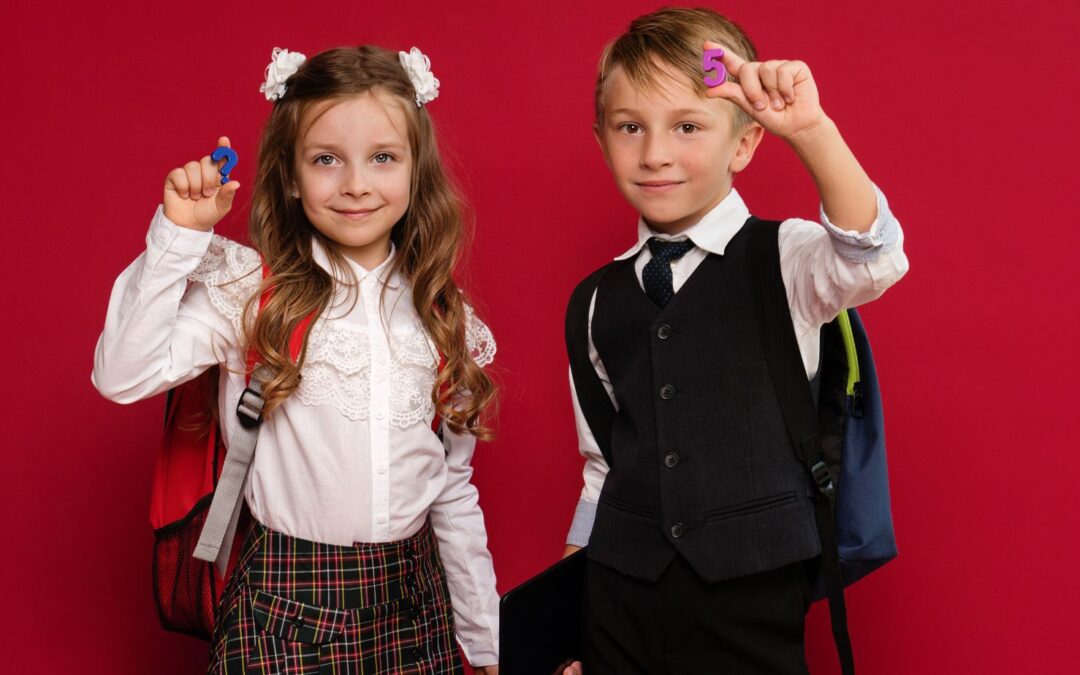As parents, we all want the best for our kids—whether it’s in their academic performance, social interactions, or overall confidence.
One topic that often comes up in discussions around school policies is the use of uniforms. While the debate over school uniforms might seem like it’s all about fashion, there’s actually a lot more going on beneath the surface.
In this article we will dive into how dressing alike can impact our children’s behavior and confidence, and why it might be worth considering the psychological effects of school uniforms.
A Level Playing Field: Equality in the Classroom
One of the most significant benefits of school uniforms is how they create a sense of equality among students. In schools where uniforms are the norm, there’s less focus on what everyone is wearing and more emphasis on who they are as individuals.
Without the pressure to keep up with the latest fashion trends or wear expensive brands, kids can feel more at ease in their environment. This can be especially important during the formative years, where self-esteem is often tied to appearance. For those who still want to express a bit of personal style, choosing the right school clothes for girls outside of uniform days can provide that balance.
By dressing alike, students are less likely to judge each other based on outward appearances, which can lead to a more inclusive and accepting school culture. When kids aren’t distracted by what others are wearing, they may be more likely to focus on building friendships and participating in class rather than worrying about fitting in based on their clothes.
Fostering a Sense of Belonging
Another interesting psychological aspect of school uniforms is the sense of belonging they can foster. When kids wear the same uniform, they’re visually and symbolically part of the same team. This can create a stronger sense of community within the school, where everyone is working together towards common goals.
This sense of unity can be particularly beneficial for kids who might otherwise feel left out or different. When everyone is dressed the same, it reinforces the idea that they’re all in it together, which can boost morale and make kids feel more connected to their peers.
For some students, this sense of belonging can translate into greater participation in school activities, better attendance, and a more positive attitude towards school in general.
Reducing Peer Pressure and Bullying
Let’s face it—peer pressure is a powerful force, especially during the school years. Kids can sometimes feel pressured to wear certain clothes or adopt a specific style to fit in, which can be stressful and expensive for parents. School uniforms can help reduce this pressure by eliminating the daily decision of what to wear.

When everyone wears the same outfit, it becomes much harder for kids to tease each other about their clothes. This can lead to a decrease in bullying related to appearance, which, unfortunately, is all too common in schools. By removing clothing as a source of comparison, uniforms can help create a safer and more supportive environment where kids can focus on what really matters—their education and personal growth.
Boosting Confidence Through Simplicity
Interestingly, the simplicity of school uniforms can also boost kids’ confidence. With uniforms, there’s no need to worry about keeping up with the latest trends or whether their outfit is “cool” enough. This can be a relief for many students, allowing them to concentrate on their studies and social interactions without the added stress of fashion choices.
In addition, wearing a uniform can help kids mentally prepare for the school day. Just as adults might feel more professional when they put on work attire, students might feel more focused and ready to learn when they put on their school uniform. This small but significant shift in mindset can make a big difference in how they approach their day, from the classroom to the playground.
Encouraging Discipline and Responsibility
Finally, school uniforms can play a role in teaching kids about discipline and responsibility. Wearing a uniform requires students to adhere to a dress code, which can help them develop a sense of routine and self-discipline. This can extend beyond just getting dressed—students may carry this discipline into other areas of their lives, like completing homework or participating in class.

Moreover, taking care of their uniform—keeping it clean, neat, and ready for the next day—can instill a sense of responsibility in children. It’s a small but valuable lesson in taking care of their belongings and presenting themselves with pride.
Wrapping It Up: The Bigger Picture
While school uniforms might not be the most exciting topic, they do have some compelling psychological benefits that can positively impact our kids’ behavior and confidence.
From promoting equality and reducing peer pressure to fostering a sense of belonging and encouraging discipline, uniforms can play a significant role in shaping a supportive and inclusive school environment.
As a successful parenting plan, it’s important to consider these factors when thinking about our children’s school experience. Whether your child’s school already has a uniform policy or you’re just exploring the idea, understanding the psychology behind school uniforms can help us appreciate the bigger picture of how these simple outfits can contribute to our kids’ overall well-being and success.
Jessica has a flair for writing engaging blogs and articles. She enjoys reading and learning new things which enables her to write different topics and fields with ease. She also strives to break down complex concepts and make them easy for anybody to comprehend.





